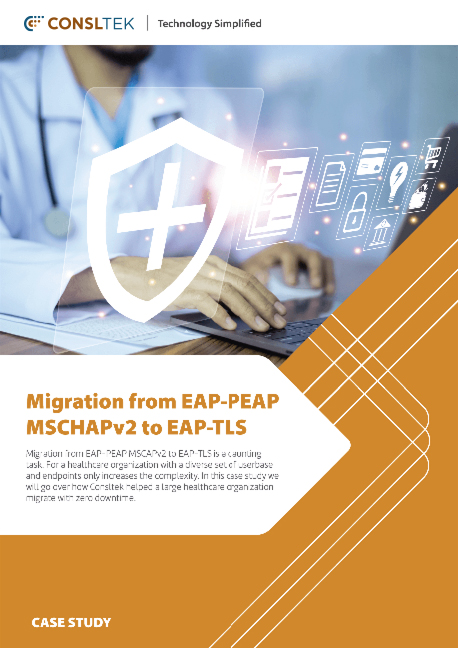Organizations today face an unprecedented challenge in modernizing their network security infrastructure. The Secure Access Service Edge (SASE) represents more than a technological upgrade—it’s a fundamental reimagining of how businesses approach network connectivity and security.
Transitioning to a Secure Access Service Edge (SASE) architecture is transformative for businesses aiming to modernize their IT infrastructure. It enables organizations to merge network and security functionalities into a unified, cloud-native solution. However, many companies grapple with understanding the logistics of transitioning, the deployment timeline, and how SASE integrates with existing systems.
This guide will break down the SASE deployment process into digestible steps, provide estimates for deployment timelines, and explore compatibility with legacy network configurations, ensuring that your organization can embrace SASE confidently.
What is SASE and Why It Matters?
At its core, SASE combines network security functions like Secure Web Gateway (SWG), Firewall-as-a-Service (FWaaS), and Zero Trust Network Access (ZTNA) with Wide Area Networking (WAN) capabilities such as Software-Defined WAN (SD-WAN). This merger optimizes performance, security, and agility for today’s dispersed workforce and hybrid environments.
Key SASE Benefits:
- Enhanced scalability and security in cloud-based applications.
- Streamlined management with a single-pane-of-glass control.
- Cost efficiency by reducing hardware dependence.
Performance & Optimization Metrics
- Expected Outcomes
| Metric | Pre-SASE | Post-SASE | Improvement |
| Security Incident Response Time | 4-6 Hours | 30-45 Minutes | 85% Reduction |
| Network Operational Costs | High | Optimized | 40-60% Reduction |
| User Access Provisioning | Manual | Automated | 75% Efficiency Gain |

How Long Will SASE Deployment Take? – The Deployment Landscape: Key Considerations
Successful SASE implementation is not a simple technology swap but a strategic organizational transformation involving multiple critical dimensions:
- Technological Readiness
- Organizational Alignment
- Architectural Complexity
- Operational Continuity
Deployment Timelines by Organization Size
| Organization Type | Deployment Timeframe | Considerations |
| Small Business | 1–3 months | Minimal legacy infrastructure; faster deployment. |
| Mid-Sized Enterprise | 3–6 months | Moderate legacy integration and user onboarding. |
| Large Enterprise | 6–12 months | Complex legacy systems and global workforce. |
The timeline depends on factors like:
- Network complexity (e.g., legacy systems).
- Geographical spread of the workforce.
- Vendor capabilities and chosen SASE components.
Critical Milestones
- Pre-Migration Assessment: 2–4 weeks.
- Proof of Concept (PoC): 4–6 weeks.
- Full Rollout: 2–9 months depending on scale.
Phase 1: Preparatory Assessment & Planning / Organizational Readiness Evaluation (4-6 Weeks)
Conduct a thorough evaluation of your existing setup.
Current Infrastructure Audit
- Inventory Management: Document network components like firewalls, VPNs, and MPLS.
- Performance Benchmarks: Assess current latency, throughput, and security efficacy.
- Identify Gaps: Highlight areas where your current architecture falls short.
A readiness assessment should answer questions like:
- Is your current WAN architecture capable of integrating SD-WAN?
- What workloads and data flows are cloud-native versus on-premises?
Stakeholder Alignment
- Executive leadership buy-in
- Cross-functional team formation
- Initial budget and resource allocation
Technical Preliminary Assessment / Architectural Compatibility Analysis
- Legacy system integration potential
- Cloud service provider compatibility
- Network performance baseline establishment
Choose the Right SASE Vendor
Not all vendors provide the same level of integration or service. Opt for a provider that matches your organization’s scale, security requirements, and cloud strategy.
Evaluation Criteria:
| Criteria | Key Questions |
| Cloud Architecture | Does the vendor offer a fully cloud-native solution? |
| Scalability | Can the platform handle future workforce growth? |
| Features | Are Zero Trust, SWG, and SD-WAN robustly integrated? |
| Support | Does the vendor provide 24/7 global support? |
Phase 2: Design and Solution Architecture (6-8 weeks)
SASE is policy-driven. Define your organization’s specific needs to shape security protocols and access rules.
Define Policies and Goals
- Access Policies: Map users and devices to applications via Zero Trust principles.
- Data Protection Policies: Integrate Data Loss Prevention (DLP) for sensitive data security.
- Compliance Standards: Ensure configurations align with GDPR, HIPAA, or PCI DSS.
Solution Design Considerations
- Identity and Access Management Integration
- Cloud Service Provider Selection
- Security Policy Framework Development
- Network Performance Optimization Strategy
Key Design Deliverables
- Detailed implementation blueprint
- Proof of concept (PoC) architecture
- Risk mitigation strategy
- Performance benchmarking methodology
Here are some common challenges your team might face and their solution
| Challenges | Solution |
| Integration with Legacy Systems | Use gateways or cloud connectors for seamless interoperability. |
| Policy Complexity | Leverage machine learning in SASE platforms to simplify policy management. |
| User Adoption | Conduct training sessions and provide real-time support. |
| Organizational Resistance | Continuous stakeholder communication with demonstrable performance benefits |
| Skill Gap | Get certification support for targeted training programs or use external expertise engagement |
Phase 3: Pilot Implementation (8-12 Weeks)
Staged Rollout Strategy
A PoC ensures the proposed solution integrates seamlessly without disrupting business operations.
Conduct a Proof of Concept (PoC) – Key Activities:
- Deploy SASE for a specific branch or user group.
- Monitor performance, connectivity, and policy enforcement.
- Gather feedback from stakeholders on user experience and security efficacy.
Initial Pilot Group Selection
- Low-risk business units
- Controlled test environment
- Minimal operational disruption
Incremental Deployment Approach
- Limited geographical scope
- Specific application subset
- Controlled user population
Performance Monitoring Framework
- Real-time performance metrics
- Continuous security validation
- User experience tracking
- Anomaly detection mechanisms
Phase 4: Full-Scale Enterprise Deployment (12-16 Weeks)
Migrate gradually and avoid a big-bang approach by rolling out SASE in phases:
- Phased Geographic Expansion: Begin with remote access for a hybrid workforce.
- Gradual User Base Expansion: Transition main offices and data centers.
- Systematic Application Migration: Migrate branch offices and IoT devices.
Compatibility with Legacy Systems:
- Use APIs or middleware for seamless data and policy migration.
- Transition MPLS to SD-WAN incrementally, retaining critical on-premises setups as needed.
Critical Implementation Considerations
- Minimal Operational Disruption
- Continuous User Training
- Real-Time Performance Optimization
- Adaptive Security Configurations
Phase 5: Optimization and Continuous Improvement (Ongoing)
Deployment doesn’t end with integration; continuous monitoring and optimization are crucial.
Monitor and Optimize
- Performance Metrics: Latency, packet loss, and application performance.
- Security Posture: Real-time threat detection and response efficiency.
- User Feedback: Ensure seamless experience across all endpoints.
Post-Deployment Enhancement Strategies
- Advanced Threat Detection
- Performance Tuning
- Security Policy Refinement
- Technological Adaptation
Adopting SASE is not just a technical upgrade; it’s a cultural shift toward network and security unification. With a structured approach—from assessing existing infrastructure to conducting PoCs and gradual rollouts—you can ensure a smooth transition.
Companies embracing SASE gain agility, security, and cost efficiency. Whether you’re a small business or a global enterprise, the deployment process, while demanding, paves the way for long-term success in today’s cloud-first world.


0 Comments